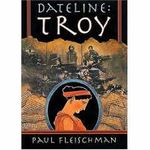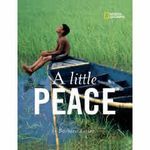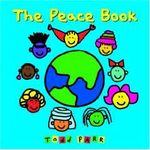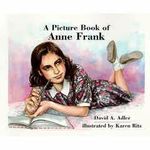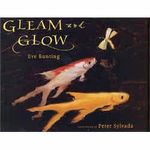Remembrance Day Read-Alouds
←
→
Page content transcription
If your browser does not render page correctly, please read the page content below
Remembrance Day Read-Alouds
A Little Peace by Barbara Kerley
This simple, beautiful photo-essay demonstrates the
philosophy that responsibility for peace does not rest with
governments and organizations alone; it is also the work of
individuals. The colorful pictures are supported by limited,
yet powerful text, illustrating how each person can work to
achieve peace. Children from around the globe highlight
simple actions, such as lending a hand, sharing a smile, and
making friends. A concluding spread identifies the city and
country where each photo was taken, and a postscript on
the organization is included. Sharing this book with
youngsters should spark discussion.–Margaret R. Tassia,
Millersville University, PA
A Picture Book of Anne Frank by David Adler
The author balances candor with discretion in its
presentation of heroine Anne Frank. Adler traces the
intersection of Anne's brief life with the forces of Nazism,
chronicling the girl's earliest years in Germany as well as
her time spent in the now-famous Amsterdam attic and
the months following arrest and deportation. "Some
people find it difficult to understand the Holocaust," Adler
concludes with grace. "But when they read Anne's diary,
it all becomes real. Then they know one of the victims.
They know Anne Frank."
Feathers and Fools by Mem Fox
An antiwar allegory ~ A pride of peacocks notices that a
flock of nearby swans can both swim and fly, feats they
themselves cannot do. They wonder if the swans will use
their strength aggressively. Soon they convince
themselves that they are in danger, and begin stockpiling
arms only to be used defensively, of course. The swans
then gather their own weapons. Fear and tension increase
until the war both groups have been preparing for breaks
out, triggered by a nervous mistake. "Soon cries filled the
air and blood darkened the earth." Two eggs survive, two
chicks hatch, a swan and a peacock. They recognize one
another as fellow birds, more alike than different, and
stumble away to share the world. This tale will be an easy
step-off to discussion of the late arms-race, perhaps
helping to clarify thoughts, even to changing opinions.Gleam and Glow by Eve Bunting
The eerie autumnal oil paintings provide the emotional
backdr opf orBunt i
ng’st aleofaf ami lyf orcedi nt oexile.Af ter
Papa leaves to join the underground in his war-torn country,
life for the eight-year-old narrator, Viktor, his five-year-old
sister, Marina, and their mother grows increasingly grim.
"Every day we heard distant gunshots and saw smoke rise into
faraway skies," while strangers fleeing the conflict share
terrible stories. The only bright spot is the pair of goldfish one
refugee leaves behind. Marina names them Gleam and Glow
and dotes on them. But when the threesome finally departs
for the border, they must leave the fish behind, so Viktor
releases them into the family's pond. After a long stay in a
refugee camp and a tearful reunion with their father, the
family returns to find their home devastated but the pond full
of fish, "as shimmery and dazzling as melted gold." This image
of hope and renewal strikes a strong keynote in Bunting's
bittersweet story (inspired by true events in the Balkans, she
explains in an afterword). The artwork reveals the bleakness
of both landscape and emotions in a time of war.
Rose Blanche by Roberto Innocenti
A young German schoolgirl, Rose Blanche, follows the soldiers
when they arrest a boy and discovers a concentration camp in the
woods. Thereafter, she takes food to the prisoners until the town
is liberated. Ironically, when she travels to the camp on that day
she is shot by the soldiers. The oppression of Fascism is shown
through the powerful and realistic paintings. Although the story is
simply told, it will require interpretation as details such as the
concentration camp are not named nor explained, and the death
of Rose Blanche is implied but not stated. This is a difficult book
to classify, as the text is easy enough for a young child to read
alone, and it has the appearance of a picture bookbut the content
of the text and illustrations is full of emotional impact and
subtlety.
Somewhere Today –A Book of Peace by Thomas
This affirming prose poem asserts that peace begins with simple
gesturesAacts in which any child might take part: "someone/ is/
visiting/ a/ friend/ who/ is/ old"; "someone/ is/ planting/ a/ tree."
to master chopsticks. Thomas quietly makes readers aware of the
kindness and pleasures around us. Her spare text and repeating
phrases each page begins with the words "Somewhere today.../
someone/ is..."The Peace Book
For children, the concept of peace can be a difficult one to
understand, and Parr makes an admirable attempt to explain it.
He relates the notion to making new friends, listening to
different kinds of music, and helping your neighbor. Where he
stretches it a bit is with sentiments such as, "Peace is wishing
onast ar "or" …wat chingi tsnow,"eveni fthei magesar e
tranquil. Bright primary colors and bold black outlines define
cartoon like characters (animal and human) with smiling
features. A helpful and engaging book that's sure to spark
discussion.
Sadako by Eleanor Coerr
Sadako Sasaki was two years old when the atom bomb was
dropped on the city of Hiroshima in Japan where she lived
with her family. Ten years later she died of leukemia which
was caused by the radiation from the bomb. While she was
in the hospital, Sadako's best friend, Chizuko, told her the
legend of the thousand paper cranes. Soon, Sadako started
to fold one thousand paper cranes so that the gods would
grant her wish and make her well. When Sadako died, her
classmates folded the three hundred fifty-six cranes that
Sadako was unable to finish, so that one thousand were
buried with their friend. Her friends published her letters in
a book and collected money for a statue of Sadako, which
now stands in Hiroshima Peace Park. At the base of the
statue is the plea for all children: "This is our cry, this is our
prayer, peace in the world." The death of Sadako came to
symbolize the death of all children killed by bombs.
*** There is a lesson plan for Sadako in the Character
Development Newsletter
The Wall by Eve Bunting and Ronald Himler
A boy and his father have come to the Vietnam War Memorial
to look for the boy's grandfather's name among those who
were killed in the war. They find his name surrounded, but far
from lost, in the rows of print that "march side by side, like
rows of soldiers." "I'm proud that your grandfather's name is
on this wall," says the boy's father. The boy agrees, adding,
"but I'd rather have my grandpa here." Before this powerful
book is half finished, readers will be deeply moved. Bunting's
understated prose captures the meaning of the memorial to
the American people, especially to those who lost loved ones,
without being maudlin or heavy-handed. A sensitive and
moving picture book, and a great discussion book as well.What does Peace Feel Like by Vladimir Radunsky
Radunsky strings together descriptive similes and metaphors to
describe the essence of the word "peace." "What does Peace smell
like? Like a bouquet of flowers in a happy family's living
r oom…l ikef reshandnew f urniture…l i
kepi zzawi thoni onsand
sausage. …"Tot hesideofeachquest ion,t heaut hori ndicat
est he
names of children from the Ambrit International School in Rome
who contributed their sentiments to the text. Other spreads
attempt to explain how peace looks, sounds, tastes, and feels.
Colorful gouache illustrations, primitive in design, supplement the
concept. The book also features an extensive list of words for
peace in over 150 languages.
Dateline: Troy by Paul Fleischman
Paul Fleischman offers a glimpse at the Trojan War through modern
day newspaper headlines. By equating such events as Agamemnon
offering sacrifice to the Greeks before sailing to Troy with George
Bush's declaration of a national day of prayer after sending troops to
the Persian Gulf, or the massacre of the Trojans by the Greeks to the
My Lai incident in Vietnam, Fleischman helps young scholars
understand the myth through present-day events and attitudes. Each
page of text is enhanced by a collage of newspaper clippings relating
to a particular piece of the myth.
Paths to Peace by Jane Zalben
This handsome volume highlights 16 individuals who have
worked to improve conditions for others through their words
and actions. Included are writers, philosophers, Civil Rights
advocates, and politicians, many of whom are Nobel Peace Prize
recipients. The book focuses on celebrated individuals such as
John Fitzgerald Kennedy, Martin Luther King, Jr., Eleanor
Roosevelt, Cesar Chavez, and Elie Wiesel. Also covered are
those newer to recognition, such as Wangari Maathai, who
works for conservation in Kenya, and Aung San Suu Kyi, who
fights for democracy in Myanmar. The well-written, single-page
vignettes provide an interesting glimpse into the lives of these
peopl eandwi llpiquer eader ’
scur iosityandencour aget hem to
learn more. Each biography is surrounded by an eye-catching
border and faces a full-page illustration and quote from the
subject."Though War is Old / It has not / Become wise," Walker writes
in this spare, eloquent poem. Naive-style paintings in neon-
bright colors celebrate forest diversity and urban
communities across the globe. Then each community, in turn,
is destroyed by war, its glowing warmth disappearing beneath
clouds of smoke and ash. On the first page, a smiling frog and
a beautiful pink flower bask in a pond; on the opposite page,
"Huge tires / Of a / Camouflaged / Vehicle are /About to /
Squash / Them flat." Then the destruction intensifies:
something drops from the sky on a Latino boy dreaming on a
haystack. Images of eyes greedy for oil give way to a stark
picture of mothers and babies buried beneath swirling, tactile
streams of waste. The communities are always idyllic, with
no hint of poverty or struggle, but the activist
message and sometimes frightening images will compel
children to talk about what they feel and see. Add this to
"Core Collection: Peace Not War," in Booklist, November 1,
2006. Rochman, Hazel
All of these books are available at www.amazon.ca. The book descriptions were also
copied from the Amazon website.You can also read





